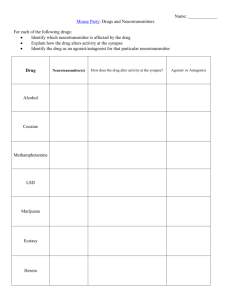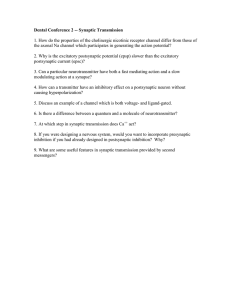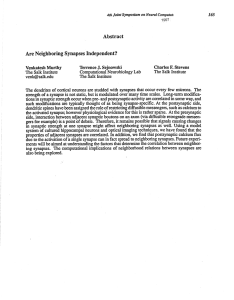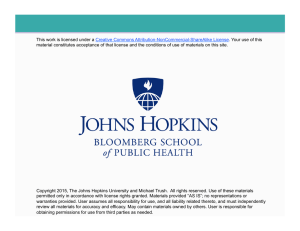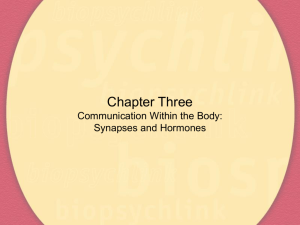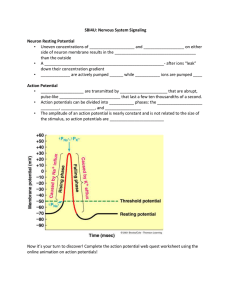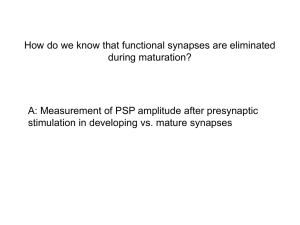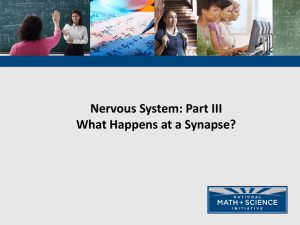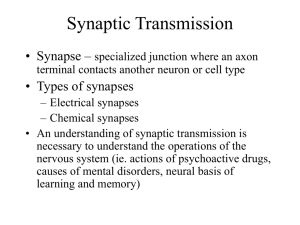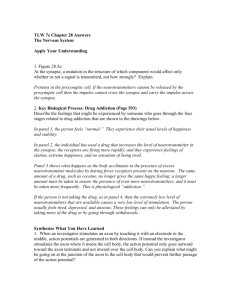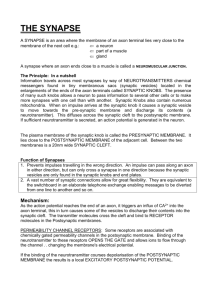ns-part2 - AandPonline.com
advertisement
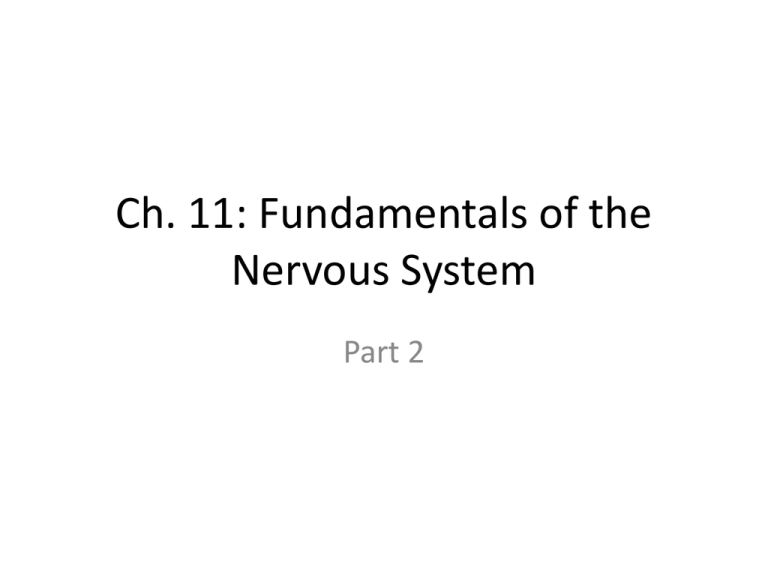
Ch. 11: Fundamentals of the Nervous System Part 2 Action Potentials • Brief reversal of membrane potential (70 to 30mv) • 3 phases • Do not decay with distance • Lasts about 3 ms • Also called a nerve impulse Generation of an AP • 1.) Resting State: All gated Na+ and K+ channels are closed. Generation of an AP • 2.) Depolarization: Na+ channels open Generation of an AP • 3.)Repolarization: Na+ channels are inactivating, and K+ channels open Generation of an AP • 4.) Hyperpolarization: Some K+ channels remain open, and Na+ channels reset. Threshold and the all or none phenomenon • threshold must be reached in order to generate an AP • 15 to 20 mv membrane depolarization • subthreshold vs. threshold stimuli • all or none phenomenon • match analogy Propagation of an AP • Propagation of an action potential fig 11.12 • Coding for Stimulus Intensity • Refractory Periods • Absolute Refractory Period • Relative Refractory Period 8 Propagation of an AP • Conduction Velocity • Axon Diameter • Degree of Myelination Figure 11.15 • Continuous versus Saltatory Conduction 9 Propagation of an AP • Group A fibers • Group B fibers • Group C fibers 10 The Synapse • Two types • axodendritic synapses • axosomatic synapses • Two neurons • presynaptic neuron • postsynaptic neuron 11 The Synapse • Electrical Synapse • Chemical Synapse 12 Information Transfer Across Chemical Synapses • 1. Action Potential arrives at axon terminal • 2. Voltage Gated Ca2+ channels open and CA2+ enters the axon terminal • 3. Ca2+ entry causes synaptic vesicles to release neurotransmitter • 4. Neurotransmitter diffuses across synaptic cleft and binds to postsynaptic receptors • 5. Binding of neurotransmitter opens ion channels, creating graded potentials • 6. Neurotransmitter effects are terminated 13 Postsynaptic Potentials and Synaptic Integration • Excitatory Synapses and EPSP’s • Inhibitory Synapses and IPSP’s • Integration and Modification of synaptic Events • Temporal Summation • Spatial Summation • Synaptic Potentiation • Presynaptic Inhibition 14 Neurotransmitters • Classification of Neurotransmitters by chemical structure • Acetylcholine • Biogenic Amines • Amino Acids • Peptides • Purines • Gases and Lipids • Gasotransmitters • Endocannabinoids 15 Neurotransmitters • Classification of neurotransmitters by function. • Effects: Excitatory Vs. Inhibitory • Actions: Direct Versus Indirect 16 Neurotransmitter Receptors • Channel-Linked Receptors: Mechanism of Action • G Protein-Linked Receptors: Mechanism of Action 17 Basic Concepts of Neural Integration • Organization of Neurons: Neuronal Pools 11.22 • Types of Circuits Fig 11.23 • Patterns of Neural Processing • Serial Processing • Parallel Processing 18 Study Guide 19
